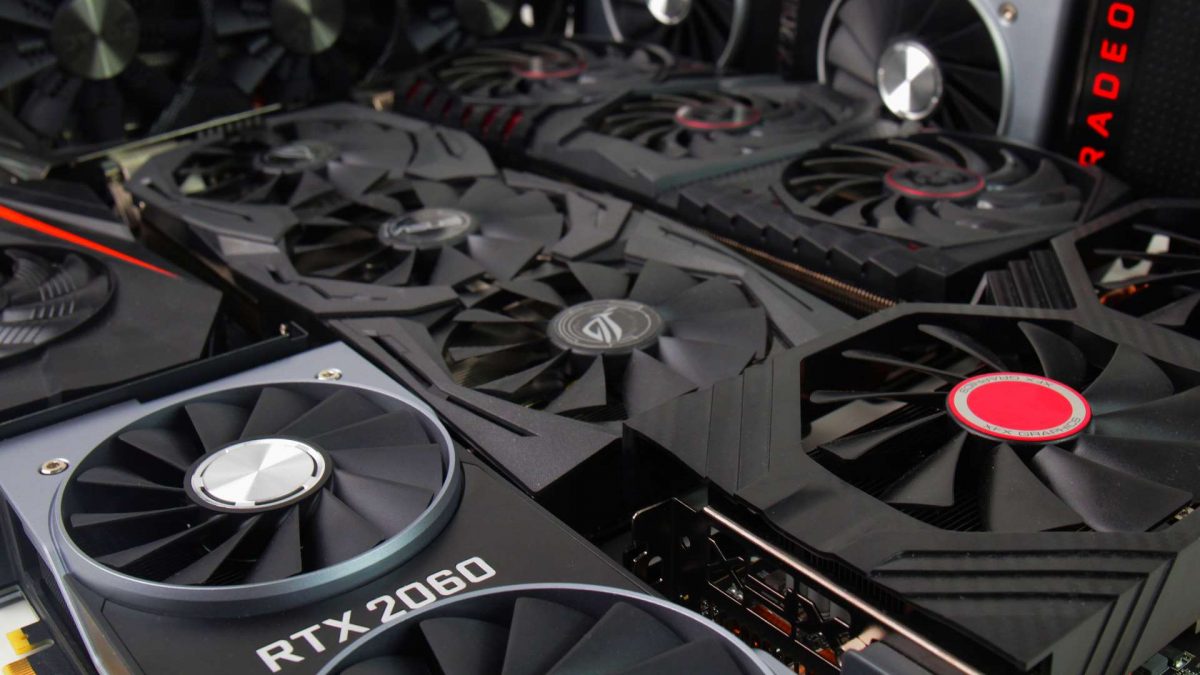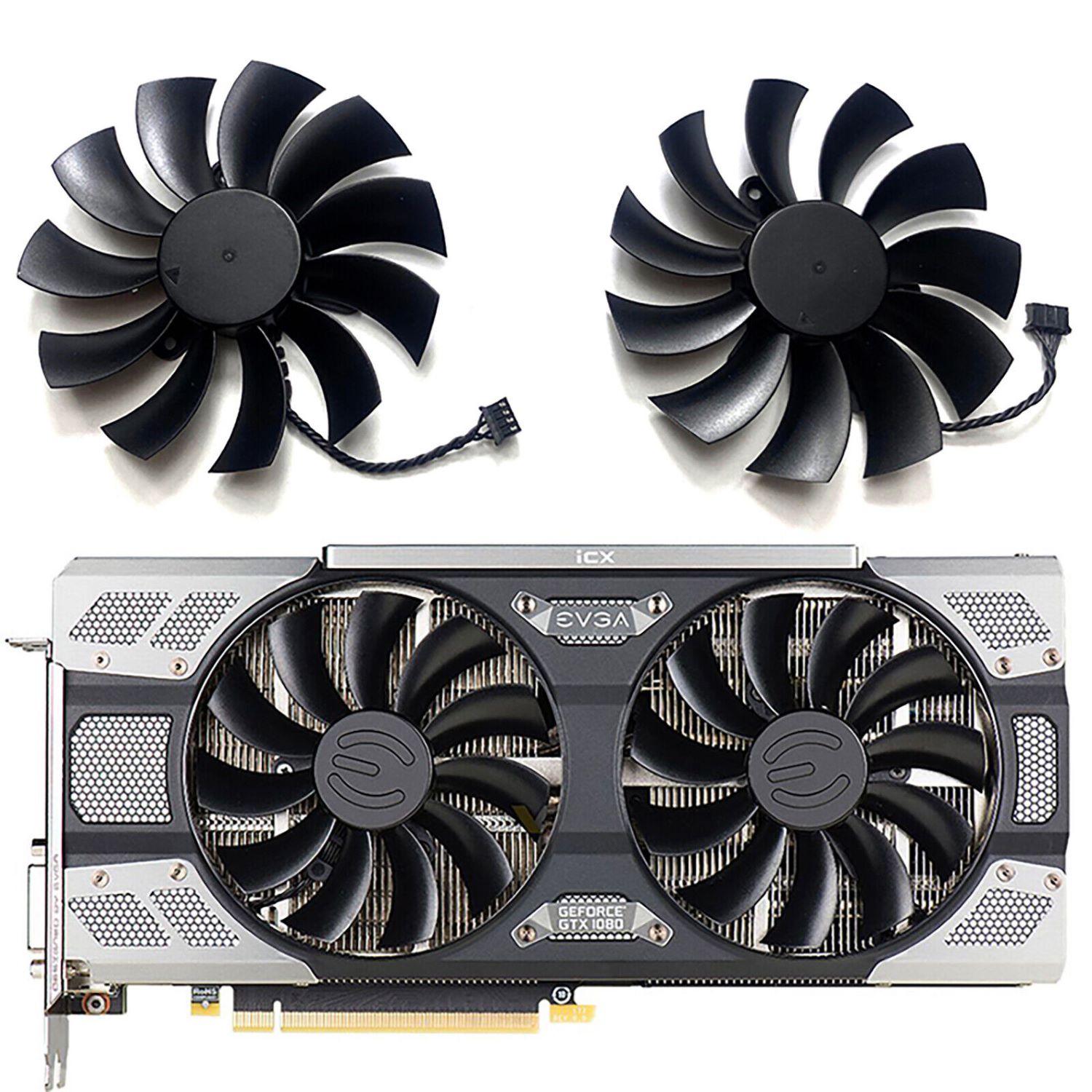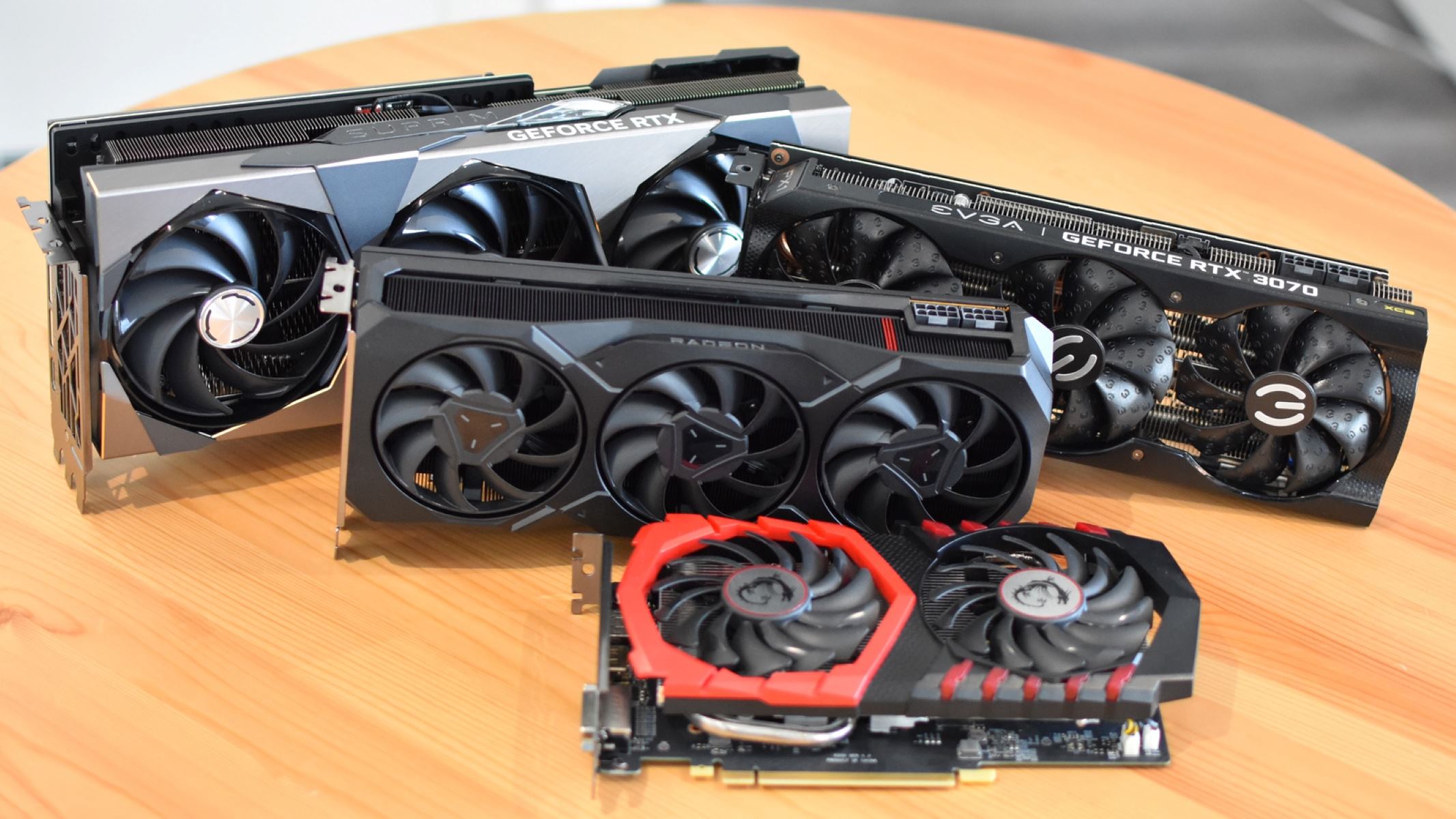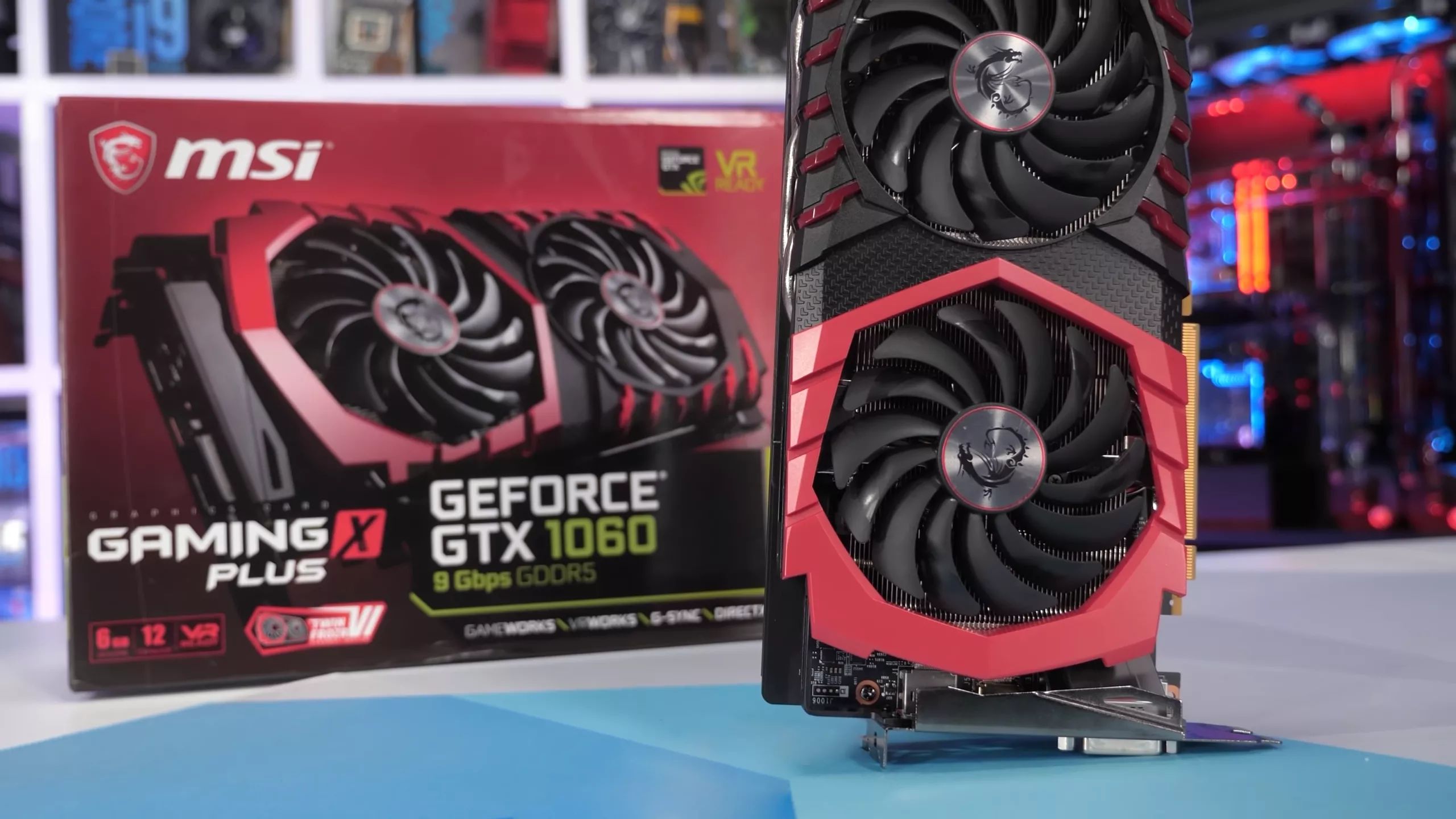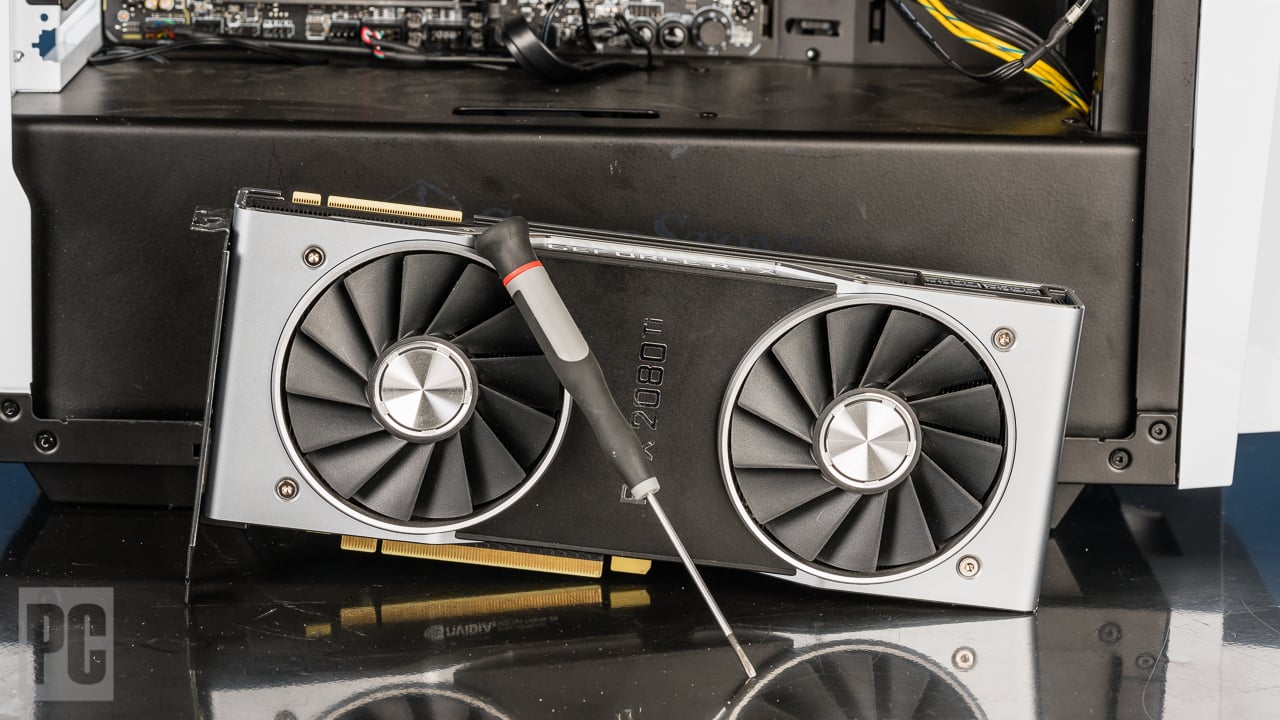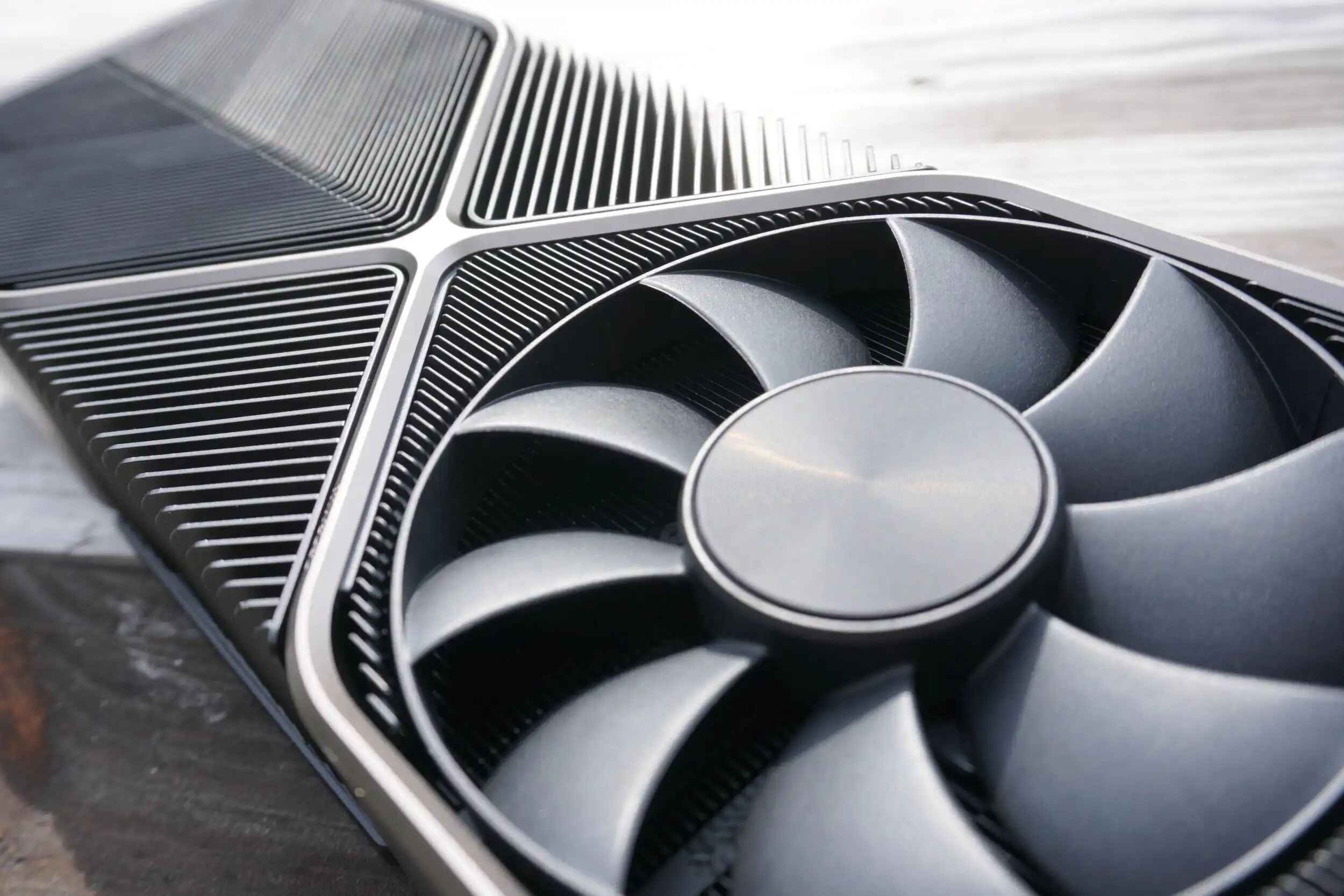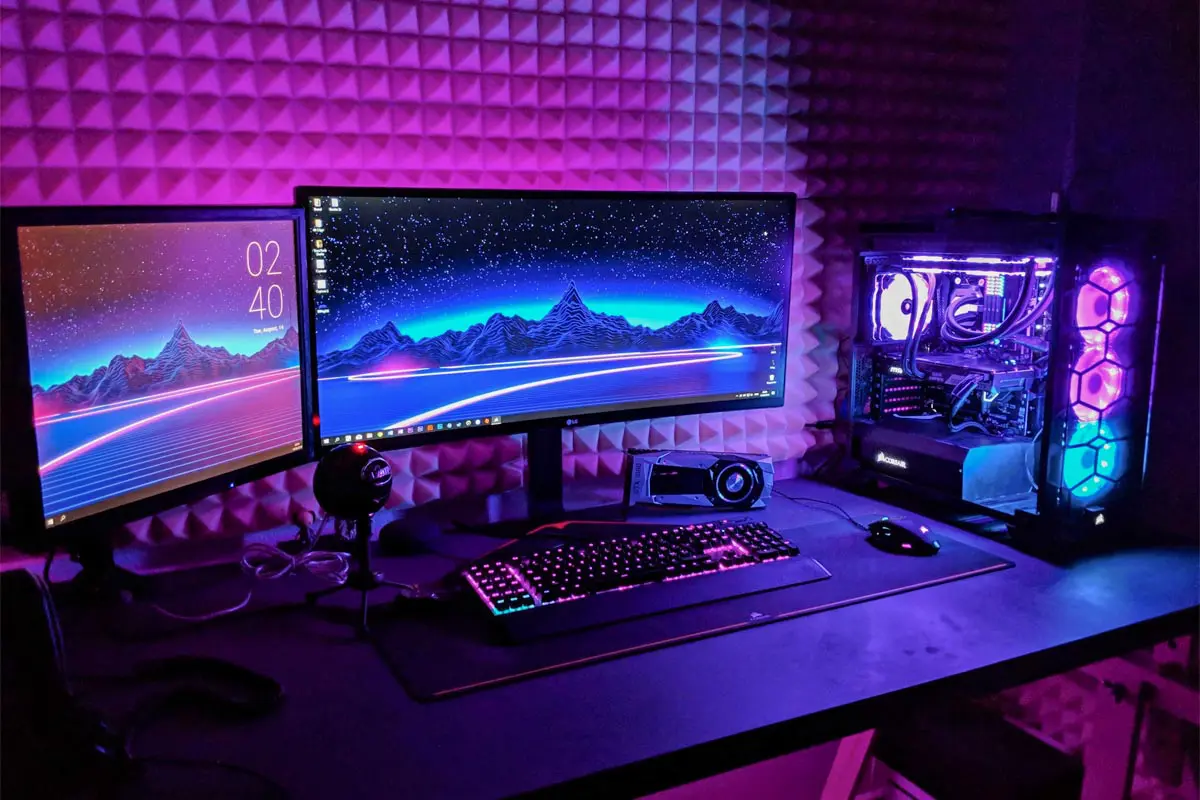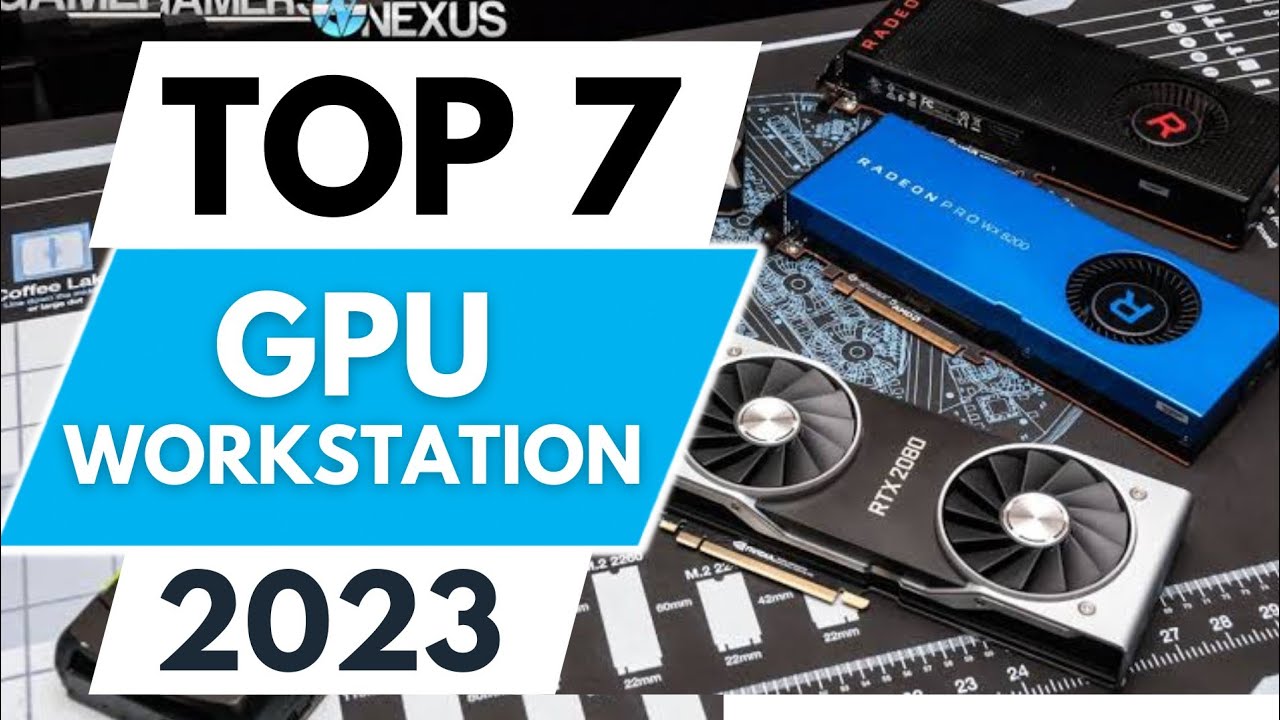Introduction
Welcome to our guide on determining how good of a graphics card you need. If you are a gaming enthusiast, a video editor, a graphic designer, or a 3D modeler, having a powerful graphics card is essential to ensure smooth performance and stunning visuals. In this article, we will discuss the various factors to consider when choosing a graphics card that meets your specific needs.
A graphics card, also known as a GPU (Graphics Processing Unit), is a vital component of a computer that is responsible for rendering images, videos, and animations. It is especially important for tasks that require intensive graphical processing, such as gaming, video editing, graphic design, 3D modeling, and virtual reality.
When determining the need for a graphics card, several factors come into play. These factors include the specific requirements of the tasks you plan to perform, such as gaming, video editing, or 3D modeling. Additionally, budget considerations will play a role in determining the level of performance you can afford.
In the following sections, we will explore the graphics card requirements for different tasks, such as gaming, video editing, graphic design, 3D modeling, and virtual reality. We will provide recommendations based on both performance needs and budget constraints. By the end of this article, you will have a better understanding of how good of a graphics card you need for your specific requirements.
What is a graphics card?
A graphics card, also known as a GPU (Graphics Processing Unit), is a critical component of a computer system that is specifically designed to handle and optimize the rendering of visuals on a monitor or display. It is responsible for transforming data into images that we can see and interact with.
The graphics card works in tandem with the computer’s CPU (Central Processing Unit) to process and generate images, videos, and animations in real-time. It is equipped with dedicated memory, processing cores, and specialized circuitry that can rapidly perform complex calculations required for rendering tasks.
Graphics cards come in various forms, including dedicated cards and integrated graphics. Dedicated graphics cards are separate components that are added to the computer system’s motherboard, providing higher performance capabilities and enhanced graphics processing power. On the other hand, integrated graphics are built into the CPU itself, offering more basic graphical capabilities but often sufficient for everyday tasks.
In addition to rendering images and graphics, graphics cards also play a crucial role in accelerating tasks such as video encoding, decoding, and other computationally intensive processes. They are designed with parallel processing capabilities, allowing them to handle multiple tasks simultaneously and deliver faster and more efficient performance.
Modern graphics cards are equipped with advanced technologies such as shader units, texture mapping units, and raster operators, which help in achieving high-quality visuals, realistic shading, and smooth animations. They are also optimized for specific tasks, such as gaming or professional applications like video editing and 3D modeling, to deliver the best performance and user experience.
Overall, a graphics card is a fundamental component for any computer system, particularly for tasks that require extensive graphical processing. It not only enhances the visual experience but also significantly improves performance in various applications, ensuring smooth gameplay, faster rendering times, and more immersive virtual experiences.
Factors to consider when determining the need for a graphics card
When determining the need for a graphics card, several factors should be taken into consideration to ensure you choose one that meets your requirements. Here are some key factors to consider:
- Task-specific requirements: The primary consideration is the specific tasks you plan to perform. Different applications have varying demands on the graphics card. For gaming, you’ll need a card that can handle the latest games at your desired resolution and frame rate. Video editing and graphic design require cards with ample video memory, high memory bandwidth, and powerful rendering capabilities. Similarly, 3D modeling and rendering tasks require both high memory capacity and a dedicated card with excellent shading and computational capabilities.
- Resolution and frame rate: The display resolution and desired frame rate also impact the graphics card choice. Higher resolutions, such as 4K or ultrawide displays, require more powerful GPUs to drive the pixels effectively. Similarly, if you aim for a high refresh rate, like 144Hz, you’ll need a graphics card capable of delivering the necessary frame rates to sustain smooth gameplay.
- Compatibility: Ensure that the graphics card is compatible with your computer’s hardware, including the motherboard and power supply, to avoid any compatibility issues. Check the card’s physical dimensions, power requirements, and available expansion slots on your motherboard.
- Power requirements: High-performance graphics cards typically require sufficient power supply. Check the recommended power supply wattage for the graphics card and ensure your power supply can deliver the required power. Inadequate power supply can result in stability issues and reduced performance.
- Budget: Budget is an important consideration when choosing a graphics card. Determine how much you are willing to spend and find a card that offers the best value for your money. Consider balancing your budget between other components of your system as well, to avoid bottlenecks.
- Future-proofing: It’s worth considering future needs when selecting a graphics card. If you plan to upgrade your display or engage in more demanding tasks in the future, it might be wise to invest in a slightly more powerful card to ensure longevity.
By considering these factors, you can make an informed decision when determining the need for a graphics card. Remember to choose a card that aligns with your specific requirements and offers the best balance between performance, budget, and future needs.
Gaming requirements and graphics cards
For gamers, having a suitable graphics card is vital to achieve smooth gameplay and an immersive visual experience. The requirements for gaming vary depending on the type of games you play and the desired graphical settings. Here are some key considerations when choosing a graphics card for gaming:
- Game compatibility: Ensure that the graphics card you choose is compatible with the games you plan to play. Check the recommended system requirements for the games and compare them to the specifications of the graphics card.
- Resolution and frame rate: The resolution and frame rate you desire greatly impact the graphics card requirements. Higher resolutions, such as 1440p or 4K, and higher frame rates, like 60 FPS or 144 FPS, will necessitate a more powerful graphics card to deliver smooth gameplay and visually stunning graphics.
- Graphic settings: If you prefer to play games at higher graphical settings, such as ultra or high settings, you will need a graphics card with sufficient power and memory to handle the increased workload. This ensures that the game is rendered accurately and the visual details are crisp and realistic.
- VR gaming: If you are interested in virtual reality (VR) gaming, you will need a graphics card that is specifically VR-ready. VR places additional demands on the graphics card due to the need for rendering two separate images simultaneously. Look for a card with ample graphics memory, high processing power, and VR-specific features.
- Future-proofing: Gaming technology evolves quickly, so it’s important to consider future gaming requirements when selecting a graphics card. Invest in a card that provides some headroom for upcoming games and technologies to ensure your system remains capable of handling new releases for a decent amount of time.
It’s also worth noting that gaming requirements can vary significantly between different genres and game engines. Before purchasing a graphics card, it’s a good idea to research benchmarks and reviews for your specific gaming needs.
Ultimately, choosing the right graphics card for gaming depends on a combination of factors, including the desired resolution, frame rate, graphical settings, and the compatibility with the games you plan to play. By considering these factors, you can ensure a smooth and enjoyable gaming experience with stunning visuals.
Video editing and graphic design requirements and graphics cards
When it comes to video editing and graphic design, having a powerful graphics card is essential to ensure smooth performance and efficient rendering. These tasks often involve working with high-resolution images, complex animations, and multiple layers of graphics. Here are some important considerations when choosing a graphics card for video editing and graphic design:
- Memory capacity: Video editing and graphic design applications require a graphics card with ample video memory (VRAM). Higher VRAM capacity allows for efficient handling of large video files, high-resolution images, and complex graphic elements.
- Processing power: Look for a graphics card with a powerful GPU that can handle demanding tasks such as real-time rendering, color grading, and effects processing. The number of CUDA or stream processors, as well as the clock speed, plays a crucial role in determining the processing power of a graphics card.
- Memory bandwidth: Higher memory bandwidth enables faster data transfer between the graphics card and other system components. This is beneficial for tasks that require frequent access to graphic assets and rendering data.
- Support for hardware acceleration: Many video editing and graphic design software applications utilize hardware acceleration through technologies like CUDA (Nvidia) or OpenCL. Ensure that your chosen graphics card is compatible with these technologies to take advantage of accelerated rendering and processing.
- Multi-monitor support: If you work with multiple monitors for video editing or graphic design purposes, consider a graphics card that supports the number of monitors you require. Check for the necessary video outputs (such as HDMI or DisplayPort) and the maximum supported resolutions.
- Color accuracy: For professional graphic design work, color accuracy is crucial. Look for graphics cards that offer support for wider color gamuts and color calibration tools to ensure accurate color reproduction.
- Software compatibility: Check the compatibility of your chosen graphics card with the video editing and graphic design software you plan to use. Certain software applications may have specific requirements or recommendations for graphics card models.
Video editing and graphic design tasks place increased demands on the graphics card. By considering factors such as memory capacity, processing power, memory bandwidth, software compatibility, and color accuracy, you can choose a graphics card that provides the necessary performance and capabilities needed for seamless video editing and graphic design workflows.
3D modeling and rendering requirements and graphics cards
For professionals involved in 3D modeling and rendering, a powerful graphics card is paramount to ensure smooth performance and efficient creation of complex 3D designs and animations. These tasks often require handling large datasets, intricate geometry, realistic lighting, and extensive rendering. Here are some important considerations when choosing a graphics card for 3D modeling and rendering:
- GPU performance: Look for a graphics card with a powerful GPU that can handle the demanding calculations required for 3D modeling and rendering tasks. The number of CUDA or stream processors, clock speed, and memory bandwidth play a significant role in determining the GPU’s performance.
- Memory capacity: 3D modeling and rendering tasks involve working with massive datasets and complex scenes. A graphics card with ample dedicated video memory (VRAM) is essential to ensure smooth performance and avoid bottlenecks when handling large 3D models.
- Multi-GPU configurations: Some professional applications support multiple graphics cards in SLI (Nvidia) or CrossFire (AMD) configurations. Consider using multiple graphics cards for improved rendering performance and faster workflow, especially if your software supports such setups.
- Workstation-grade graphics cards: For professionals engaged in intensive 3D modeling and rendering, workstation-grade graphics cards offer optimized performance, reliability, and compatibility with professional software applications. These graphics cards are specifically designed for tasks like CAD (Computer-Aided Design) and 3D rendering, providing enhanced stability and advanced features.
- Support for specialized rendering engines: If you work with specific rendering engines like Autodesk Arnold or Maxon Cinema 4D’s ProRender, ensure your graphics card is compatible and can take advantage of these rendering engines’ features and optimizations.
- Real-time visualization: Real-time rendering and visualization are becoming increasingly important in 3D modeling. Look for a graphics card that supports real-time ray tracing, viewport optimizations, and other features that accelerate and enhance the real-time visualization of your 3D models.
3D modeling and rendering tasks can be highly demanding on the graphics card, requiring powerful GPUs, ample VRAM, and compatibility with specialized rendering engines. By considering factors such as GPU performance, memory capacity, multi-GPU configurations, workstation-grade cards, specialized rendering engine support, and real-time visualization capabilities, you can choose a graphics card that meets the specific requirements of your 3D modeling and rendering workflows.
Virtual reality (VR) and augmented reality (AR) requirements and graphics cards
Virtual reality (VR) and augmented reality (AR) technologies are revolutionizing the way we interact with digital content and provide immersive experiences. To fully embrace these technologies, having a capable graphics card is crucial. Here are some important considerations when choosing a graphics card for VR and AR:
- VR/AR headset compatibility: Ensure your chosen graphics card is compatible with the VR/AR headset you plan to use. VR and AR headsets often have specific requirements regarding graphics card performance, display connectors, and software compatibility. Check the recommended system requirements of the headset manufacturer.
- VR/AR-specific features: Look for graphics cards that offer VR/AR-specific features, such as VR-specific connectors (e.g., HDMI 2.0 or DisplayPort 1.2+) and support for technologies like VRWorks (Nvidia) or LiquidVR (AMD). These features enhance the VR/AR experience by reducing latency, improving tracking, and optimizing rendering.
- Performance and frame rates: VR and AR applications require maintaining high frame rates to ensure a smooth, comfortable, and immersive experience. Ensure your chosen graphics card can deliver the necessary performance to achieve the desired frame rates in VR/AR applications.
- Compatibility with VR/AR development platforms: If you plan on developing VR/AR content, check compatibility with the development platforms and software tools you intend to use. Some platforms may require specific graphics card models or features to ensure optimal development and testing experiences.
- Multi-display support: While VR/AR experiences are primarily viewed through the headset, having a graphics card that supports multiple displays can be beneficial for content creators and developers who need to have extended displays for monitoring and multitasking.
- Memory capacity and bandwidth: VR/AR applications often involve handling large amounts of data and complex 3D models. Consider a graphics card with ample video memory (VRAM) and high memory bandwidth to ensure smooth loading and rendering of VR/AR content.
Virtual reality and augmented reality technologies rely heavily on the performance and capabilities of the graphics card to provide immersive and realistic experiences. By selecting a graphics card that is compatible with VR/AR headsets, offers VR/AR-specific features, delivers high performance and frame rates, and aligns with the requirements of your development platform, you can ensure a seamless and visually immersive VR/AR experience.
Budget considerations for choosing a graphics card
When it comes to choosing a graphics card, budget plays a crucial role in determining the options available to you. Here are some important budget considerations to keep in mind:
- Set a budget: Determine how much you are willing to spend on a graphics card. This will help narrow down your options and prevent overspending on features you may not need.
- Identify your needs: Assess your specific requirements and prioritize features accordingly. For example, if you mainly use your computer for casual gaming or standard tasks, a mid-range graphics card may suffice, saving you money compared to high-end options.
- Consider your intended usage: Think about the purpose your graphics card will serve. If you are primarily gaming, investing in a graphics card with higher performance capabilities would be ideal. However, if your needs revolve around content creation or professional work, research which features and specifications are necessary for your specific tasks.
- Look for value: Review price-to-performance ratios and read reviews to find graphics cards that offer good value for your budget. Consider both the initial cost and long-term performance to make an informed decision.
- Explore previous generation cards: Depending on your budget, it may be worth considering previous generation graphics cards. While they might not have the latest features, they can still offer excellent performance at a more affordable price point.
- Consider future upgrades: If you plan to upgrade your graphics card in the future, it might be more cost-effective to invest in a mid-range option now and save the money for a more powerful card later. This way, you can enjoy satisfactory performance in the meantime while having room to upgrade when needed.
- Compare prices from different sellers: Look for graphics cards from different retailers or online platforms to find the best deals. Prices can vary, so it’s always worth comparing before making a purchase.
Remember that while budget is an important consideration, it shouldn’t be the sole determining factor. It’s crucial to find the right balance between your budget and the performance needed for your intended usage. By considering your budget constraints and prioritizing features that align with your needs, you can find a graphics card that delivers the best value for your money.
Conclusion
Choosing the right graphics card is essential for optimizing performance and achieving the desired visual experience in various tasks such as gaming, video editing, graphic design, 3D modeling, and virtual reality. By considering factors such as task-specific requirements, resolution, frame rate, compatibility, power requirements, and budget, you can make an informed decision that meets your needs.
For gamers, it’s crucial to select a graphics card that can handle the demands of the games you plan to play, including the desired resolution, frame rate, and graphical settings. Video editors and graphic designers should prioritize memory capacity, processing power, memory bandwidth, and software compatibility to ensure smooth and efficient rendering of high-resolution images and complex designs.
3D modelers and renderers require graphics cards with powerful GPUs, ample video memory, and compatibility with specialized rendering engines. On the other hand, VR and AR enthusiasts should consider graphics cards with VR/AR-specific features, high performance, and compatibility with their chosen headsets and development platforms.
In all cases, budget considerations play a role. It’s important to set a budget, identify your needs, and find the best value for your money by comparing prices and considering previous-generation cards.
Remember, choosing a graphics card is a balance between performance requirements, future needs, and budget constraints. Research thoroughly, read reviews, and consider benchmark tests to ensure you make the right decision. With the right graphics card, you can unlock the full potential of your computer and enjoy an enhanced visual experience in your preferred tasks.







